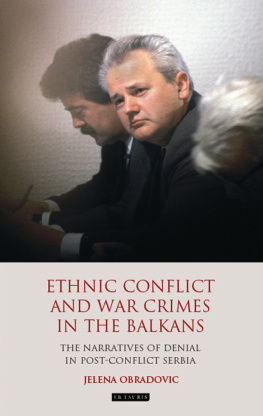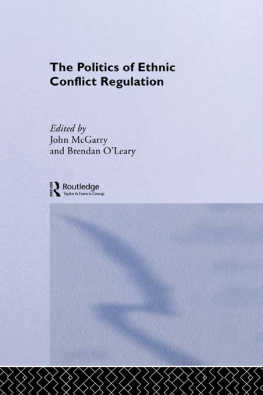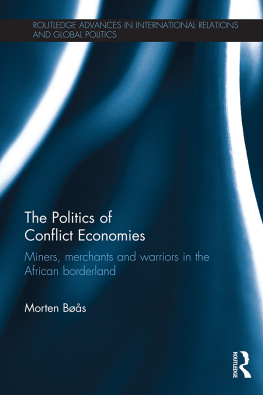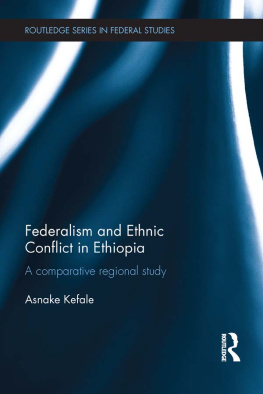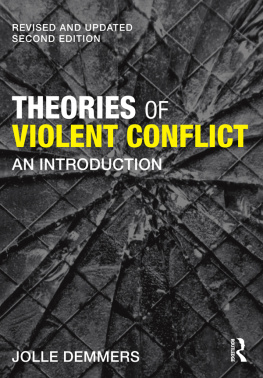How Enemies are Made
INTEGRATION AND CONFLICT STUDIES
Max Planck Institute for Social Anthropology, Halle/Saale
Series Editor: Gnther Schlee, Director at the Max Planck Institute for Social Anthropology
Editorial Board: John Eidson (Max Planck Institute for Social Anthropology), Peter Finke (University of Zurich), Joachim Grlich (Max Planck Institute for Social Anthropology), Jacqueline Knrr (Max Planck Institute for Social Anthropology), Bettina Mann (Max Planck Institute for Social Anthropology)
Assisted by: Cornelia Schnepel and Viktoria Zeng (Max Planck Institute for Social Anthropology)
Volume 1
How Enemies are Made Towards a Theory of Ethnic and Religious Conflicts Gnther Schlee
Volume 2
Changing Identifications and Alliances in North-East Africa Vol. I: Ethiopia and Kenya
Edited by Gnther Schlee and Elizabeth E. Watson
Volume 3
Changing Identifications and Alliances in North-East Africa Vol. II: Sudan, Uganda and the Ethiopia-Sudan Borderlands Edited by Gnther Schlee and Elizabeth E. Watson
How Enemies are Made
Towards a Theory of Ethnic and Religious Conflicts
Gnther Schlee

Berghahn Books
New York Oxford
First published in 2008 by
Berghahn Books
www.berghahnbooks.com
2008, 2010 Gnther Schlee
First paperback edition published in 2010
All rights reserved. Except for the quotation of short passages for the purposes of criticism and review, no part of this book may be reproduced in any form or by any means, electronic or mechanical, including photocopying, recording, or any information storage and retrieval system now known or to be invented, without written permission of the publisher.
Library of Congress Cataloging-in-Publication Data
Schlee, Gnther.
How enemies are made : towards a theory of ethnic and religious conflicts / Gnther Schlee.
p. cm.
Includes bibliographical references and index.
ISBN 978-1-84545-494-4
1. Ethnic conflict. 2. Social conflict--Religious aspects. 3. Conflict management.
I. Title.
HM1121.S34 2008
305.6'970890096773--dc22
2008026232
British Library Cataloguing in Publication Data
A catalogue record for this book is available from the British Library
Printed on acid-free paper
ISBN 978-1-84545-494-4 hardback
ISBN 978-1-84545-779-2 paperback
Contents
List of Figures and Tables
Figures
Tables
List of Abbreviations
ARPCT | Alliance for the Restoration of Peace and Counter-Terrorism |
AU | African Union |
CAP | community action plan |
DDR | demobilisation, disarmament, and reintegration |
EC | European Community |
EU | European Union |
GPS | Global Positioning System |
GRIT | graduated and reciprocated initiatives in tension reduction |
GTZ | Gesellschaft fr technische Zusammenarbeit (German Technical Assistance) |
GTZ IS | GTZ International Services (the part of GTZ implementing projects sponsored by institutions other than the German government) |
ICG | International Crisis Group |
IFSP | Improvement of Farming Systems Project |
IGAD | Intergovernmental Agency for Development |
IMF | International Monetary Fund |
JVA | Juba Valley Alliance |
LTTE | Liberation Tigers of Tamil Eelam |
NATO | North Atlantic Treaty Organisation |
NGO | non-governmental organisation |
NIF | National Islamic Front |
OLF | Oromo Liberation Front |
ONLF | Ogadeen National Liberation Front |
OPDO | Oromo Peoples Democratic Organisation |
PICD | Participatory Integrated Community Development |
RC theory | rational choice theory |
RRA | Rahanweyn Resistance Army |
SDU | Somali Democratic Union |
SNF | Somali National Front |
SNM | Somali National Movement |
SoSh | Somali shillings |
SPLA | Sudan Peoples Liberation Army |
SRRC | Somali Reconciliation and Restoration Council |
TFG | Transitional Federal Government |
TNG | Transitional National Government |
UIC | Union of Islamic Courts |
UN | United Nations |
UNDP | United Nations Development Programme |
UN-HABITAT | United Nations Agency for Human Settlements |
UNHCR | United Nations High Commissioner for Refugees |
UNOSOM | United Nations Operation in Somalia |
USC | United Somali Congress WFP World Food Programme |
Part I
Introduction

Figure 1.1 Map of north-east Africa with some of the principal ethnic groups mentioned in this book.
Chapter 1
Why We Need a New Conflict Theory
We expect science to provide insights we cannot gain from a mere everyday view on things. A systematic conceptual understanding, a methodical process, and data gathered in some standardised fashion or at least intentionally and with a sense of purpose are supposed to sharpen our awareness of hidden connections. To differentiate between science and an everyday understanding does not usually pose problems for natural scientists. Simply, by concerning themselves with different scales of phenomena from the ones accessible to the human senses without technical support for instance talking about molecules or galaxies they mark their knowledge as clearly distinct from everyday knowledge. They do not have any difficulties in defining science as a special form of knowledge. On the contrary, their problem is rather to make their knowledge generally comprehensible: to explain to an audience not trained in their own specific discipline, to laymen in their field, what it is exactly they do and this includes the politicians who are to provide them with the financial means for their research. Their problem therefore is translation of their scientific language into everyday language. Some social scientists seem to reverse this process. They translate an everyday experience into a special jargon, and call that professionalisation. Whoever sees through the trick will become suspicious and ask about the scientific gain: that is, the proportion of knowledge which would not be available to society without a separate functional area of science.
Next page

